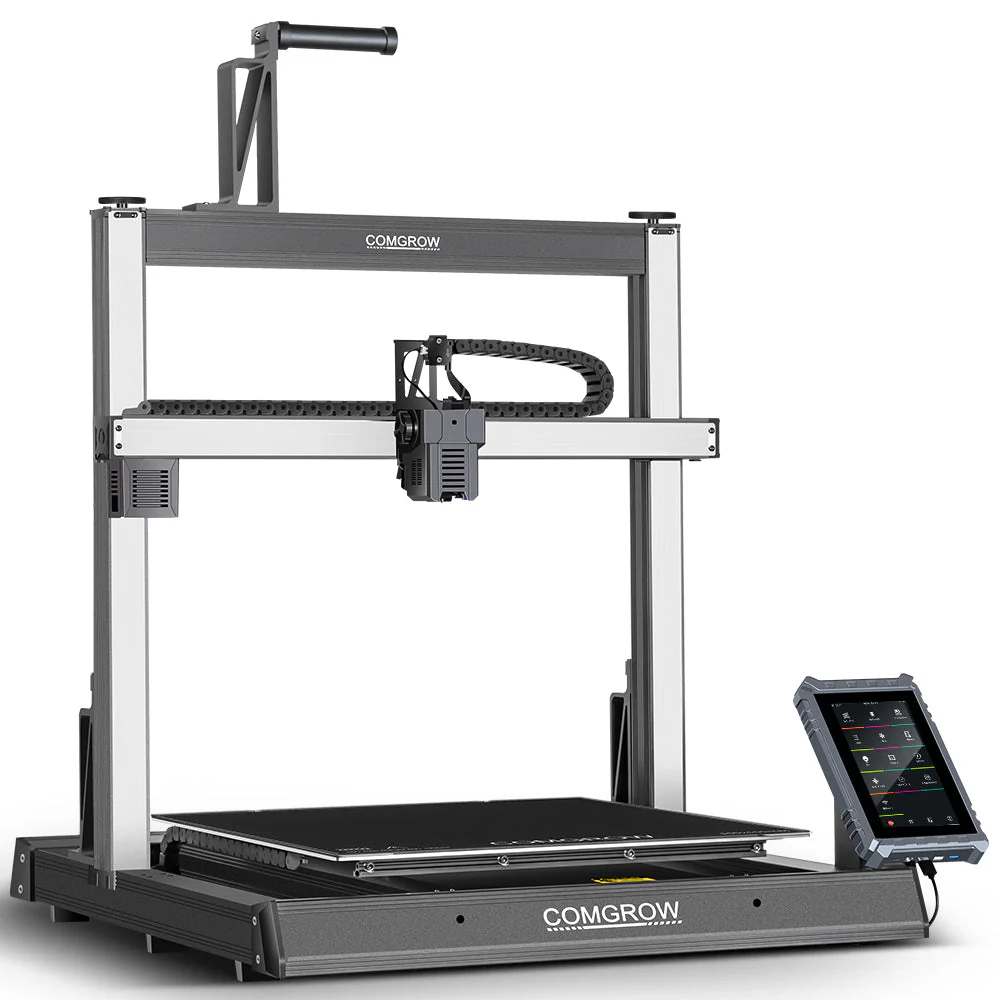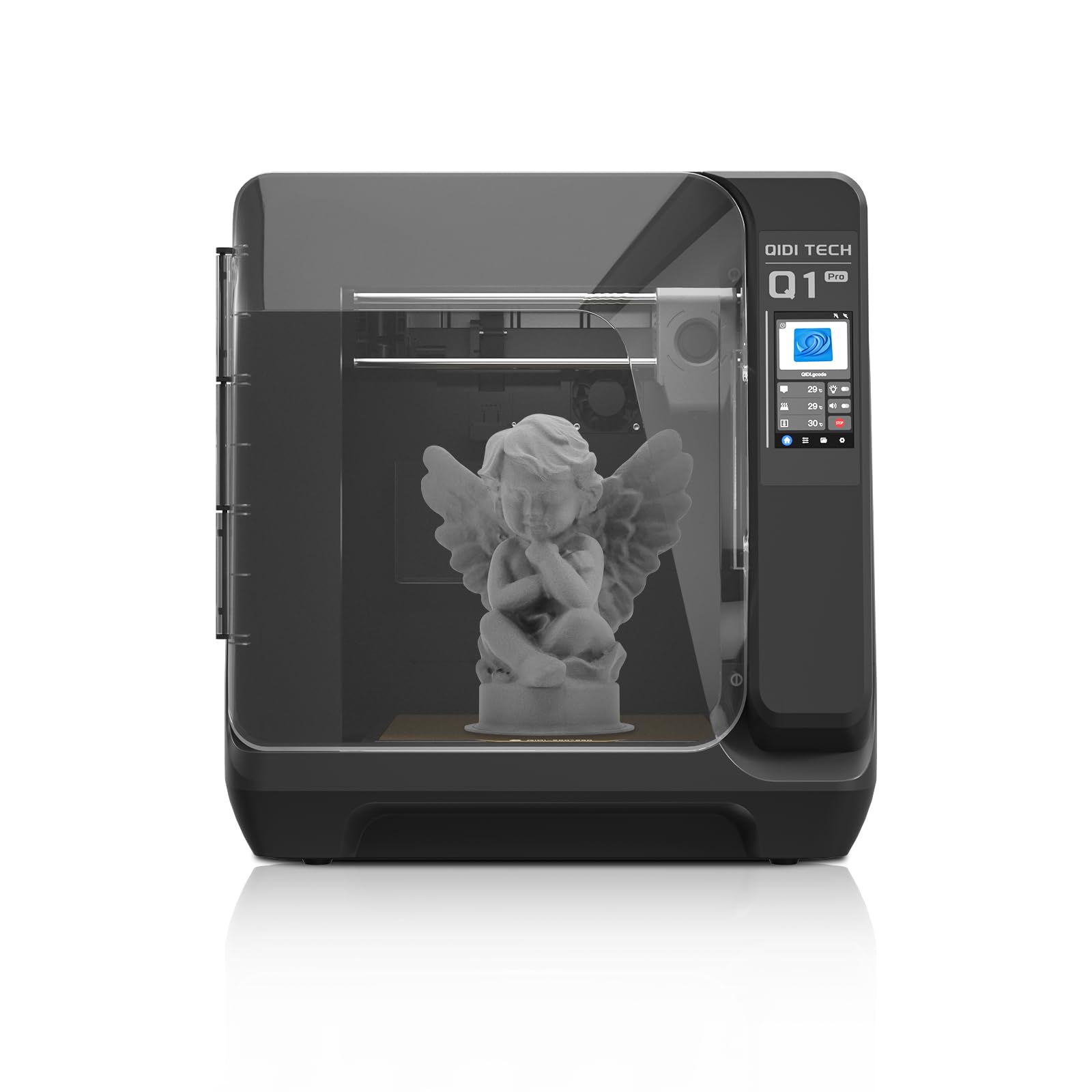Compare Comgrow T500 vs Q1 PRO
Comparison between the best 3D printers
Choose the best 3D printer at the best price. The cheapest 3D printers are here.
Buy a 3D printer here with 3D Fila.
 |
 |
|
| Model | Comgrow T500 |
Q1 PRO[BUY Q1 PRO] |
| Printing Material | Filament | Filament |
| Buy Filament for Sovol Comgrow T500 | Buy Filament forQIDI Q1 PRO | |
| Estimated price | $799,00 | $449,00 |
| Manufacturer | Sovol | QIDI |
| Release Year | 2024 | 2024 |
| Print Volume [mm] | 500x500x500 | 245x245x245 |
| Printer Size [mm] | 817x810x962 | 467x477x489 |
| Weight [kg] | 39 | 20 |
| Power Loss Recovery | YES | YES |
| Enclosed printer | NO | YES |
| Bed Leveling | Automatic | Automatic |
| Filament End Sensor | YES | YES |
| Bed type | Heated | Heated |
| Power supply system | Direct Drive | Direct Drive |
| Standard nozzle | 0,4 | 0,4 |
| Maximum Nozzle Temperature [°C] | 300 | 350 |
| Maximum Bed Temperature [°C] | 80 | 120 |
| Maximum printing speed [mm/s] | 500 | 600 |
| Filament holder | YES | YES |
| Camera for supervision | NO | NO |
| Recommended filaments | PLA, PETG, Fibra de Carbono, TPU | PLA、ABS、ASA、PETG、TPU、PC、PA、PA-CF、PET-CF、PAHT-CF etc. |
| Recommended slicers | Creality Print, Cura 5.0 ou superior, Prusa Slicer, Orca | QIDI Slicer/Cura/Simplify 3D/ORCA/PRUSA Slicer |
| Maximum Resolution [mm] | 0,1 | 0,1 |
| Processor | Cortex-A53,64-bit Processor | |
| Display | 7'' IPS touchscreen, 60Hz | Touchscreen 4,3'' |
| Power Supply | 500 W | 350 W |
| Connectivity | WiFi/USB Flash Drive/Ethernet Cable | |
| Operating systems | Windows, Linux, Macbook | |
| Date of registration in the system | 2024-07-18 | 2024-07-09 |
| Release date | 2024 | 2024 |
| Extra features | The Sovol Comgrow T500 stands out for its large print volume of 500x500x500 mm, ideal for large-scale projects. It has a direct extruder with a gear ratio of 6.5:1, speeds of up to 200 mm/s, and high-performance motors. The 7" touchscreen with Klipper software makes navigation easy. The 49-point automatic leveling ensures a perfect first layer. It also has a full metal hotend at 300°C, linear rails on all axes, and WiFi connectivity. | The QIDI Q1 Pro 3D printer stands out for its Core XY structure and heating chambers that reach up to 60ºC, ideal for advanced materials such as ABS and Nylon. It features Klipper firmware, an automatic leveling system, a high-flow extruder with a double metal nozzle and a hotend that reaches 350ºC. It offers connectivity via Wi-Fi, USB and Ethernet, as well as a 1080p camera for remote monitoring and an intuitive touchscreen for easy operation. |
| Support for multiple colors and materials (AMS and CFS) | NO | NO |
Notes * |
||
| Cost-benefit | 7 / 10 | 8 / 10 |
| Hardware | 3.6 / 10 | 5.4 / 10 |
| Tela | . | . |
| Print volume | 5 / 10 | 3 / 10 |
| Performance | 4 / 10 | 5 / 10 |
| [BUY Q1 PRO] |
Conclusion |
| In comparing the Sovol Comgrow T500 and the QIDI Q1 PRO, both 3D printers offer a compelling mix of features suited for different user needs and project types. The Comgrow T500 boasts a larger print volume, making it ideal for users focused on larger-scale projects. Its robust construction, including high-performance motors, linear rails, and a substantial display, enhances user experience, especially for those who prioritize print size and regular material options like PLA and PETG. However, its lack of an enclosed build could limit its ability to handle certain materials that require controlled environments. In contrast, the QIDI Q1 PRO, while offering a smaller print volume, excels in versatility with its ability to handle a wide range of advanced materials due to its enclosed structure and higher maximum temperature. It features a Core XY design, which improves speed and precision for complex prints. Additionally, the QIDI’s camera for remote monitoring and dual-metal nozzle design provide enhanced functionality for users seeking advanced features and ease of operation. Despite the different strengths, both printers demonstrate excellent value for their respective price points, with solid performance scores. The choice ultimately hinges on intended use: for larger projects and standard materials, the Comgrow T500 would be a strong contender; however, for those looking to utilize a broader array of materials and advanced printing capabilities, the QIDI Q1 PRO presents a more attractive option. In summary, both printers cater to specific printing needs, allowing potential buyers to choose based on their priorities in volume, material versatility, and overall functionality. |

